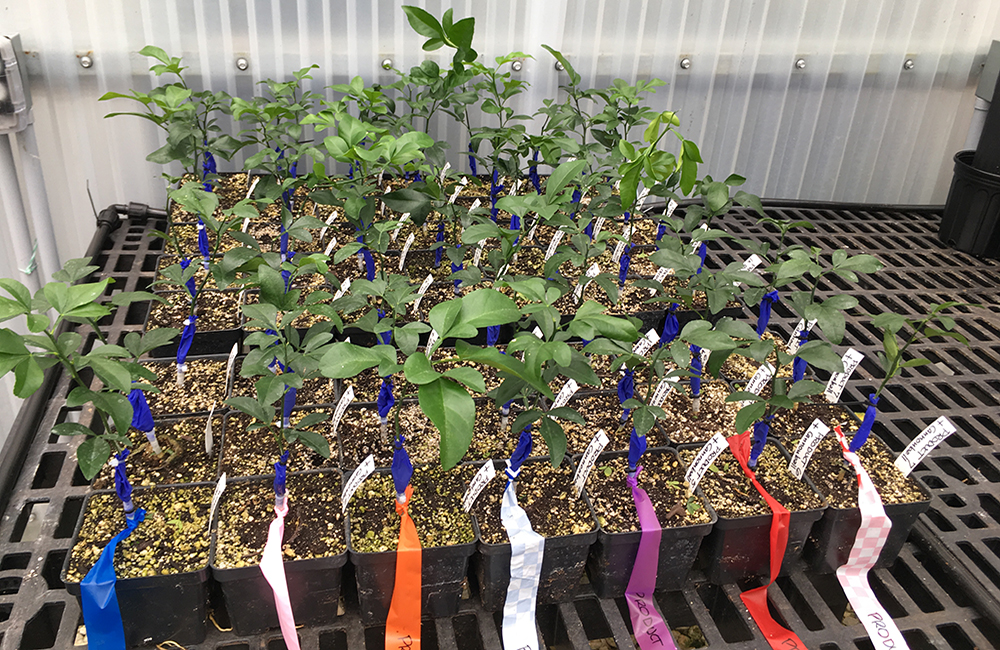

Ozgur Batuman
Associate Professor, Citrus Pathology
University of Florida, Southwest Florida Research and Education Center
2685 State Rd 29N
Immokalee, FL 34142
E-Mail: obatuman@ufl.edu
Phone: (239)658-3408

Yiannis Ampatzidis
Professor, Precision Agricultural Engineering
University of Florida, Southwest Florida Research and Education Center
2685 State Rd 29N
Immokalee, FL 34142
E-Mail: i.ampatzidis@ufl.edu
Phone: (239)658-3451

Ute Albrecht
Associate Professor, Plant Physiology
University of Florida, Southwest Florida Research and Education Center
2685 State Rd 29N
Immokalee, FL 34142
E-Mail: ualbrecht@ufl.edu
Phone: (239)658-3422

Fernando Alferez
Associate Professor, Citrus Horticulture
University of Florida, Southwest Florida Research and Education Center
2685 State Rd 29N
Immokalee, FL 34142
E-Mail: alferez@ufl.edu
Phone: (239)658-3426

Tara Wade
Associate Professor, Agricultural and Natural Resources Economics
University of Florida, Southwest Florida Research and Education Center
2685 State Rd 29N
Immokalee, FL 34142
E-Mail: tara.wade@ufl.edu
Phone: (239)658-3444

Nabil Killiny
Associate Professor, Plant Pathology
University of Florida, Citrus Research and Education Center
700 Experiment Station Rd
Lake Alfred, FL 33850
E-mail: nabilkilliny@ufl.edu
Phone: (863)956-8833

Amit Levy
Assistant Professor, Plant Pathology
University of Florida, Citrus Research and Education Center
700 Experiment Station Rd
Lake Alfred, FL 33850
E-mail: amitlevy@ufl.edu
Phone: (863)956-4631
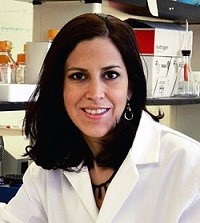
Veronica Ancona
Assistant Professor, Plant Pathology
Texas A&M University-Kingsville Citrus Center
312 N. International Blvd
Weslaco, TX 78596
E-mail: Veronica.Ancona-Contreras@tamuk.edu
Phone: (956)447-3368

Louise Ferguson
Director, Fruit and Nut Research and Information Center Cooperative Extension Expert
University of California, Davis
3045 Wickson Hall
Davis, CA 95616
E-mail: lferguson@ucdavis.edu
Phone: (530)752-0507

Bill Dawson
Professor, Plant Pathology
University of Florida, Citrus Research and Education Center
700 Experiment Station Rd
Lake Alfred, FL 33850
E-mail: wodtmv@ufl.edu
Phone: (863)956-8714
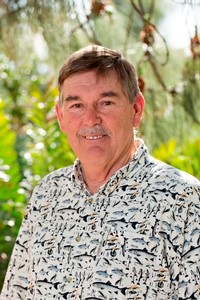
Bryce Falk
Distinguished Professor, Plant Pathology
University of California, Davis
212 Hutchison Hall
Davis, CA 95616
E-mail: bwfalk@ucdavis.edu
Phone: (530)752-0302
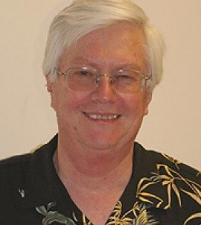
William J Lucas
Distinguished Professor Emeritus, Plant Biology
University of California, Davis
1225 Life Sciences
Davis, CA 95616
E-mail: wjlucas@ucdavis.edu
Phone: (530)752-1093
The purpose of the proposed project is to develop an automated delivery system that allows application of liquid materials (including bactericidal materials, microbial metabolites, RNAi, and other chemicals and biologicals; for simplicity and unless otherwise indicated will henceforth be referred to as “therapeutics”) with curative activity against plant vascular pathogens, specifically Candidatus Liberibacter asiaticus (CLas), the pathogen associated with HLB, through trunk and major limbs. System development will be integrated with the study of tree physiology, specifically vascular transport of liquid materials through the citrus tree to optimize time and mode of delivery.
With the devastating impacts of HLB on the citrus industry and no “silver bullet” in sight, growers are seeking alternative solutions to reduce CLas titer levels in trees and prevent disease-induced decline.
One large obstacle in using HLB therapeutic materials successfully is the mode of delivery. The most desirable and predominant mode of applications for liquid materials is through foliar sprays. But foliar delivery of water-soluble compounds can be problematic as any compound applied to the leaf surface will first have to cross the waxy (hydrophobic) cuticle, a process that can be facilitated by use of specific types of adjuvants or surfactants and application during times of flush when the leaf surface is more conducive to penetration. The need for young flush to be present at times of application greatly reduces flexibility in application scheduling. In addition, the complexity of the chemistry of therapeutic compounds and their interaction with other compounds in the tank mix, including surfactants, may have unintended consequences, potentially reducing efficacy of materials.
Our research team regularly meets with stakeholders to identify stakeholder needs and new strategies for managing HLB. These regular communications include meetings at the Southwest Florida Research and Education Center (SWFREC) in Immokalee. The SWFREC holds quarterly meetings with the South West Florida Citrus Advisory Committee, a local, elected, citrus grower group. The urgent research priorities identified were strategies for using bactericide to rehabilitate declining trees; specifically, development of novel application technologies to improve uptake of therapeutic materials including bactericides for HLB management. This project will focus on developing an automated delivery system, which addresses stakeholders’ need for non-conventional, economically viable and sustainable application technologies for HLB management. Our primary goal is to develop a practical delivery device that growers can install on existing equipment for applying therapeutics to citrus trees. In the long term, this system can be designed for adaptation to other disease and pest control applications.
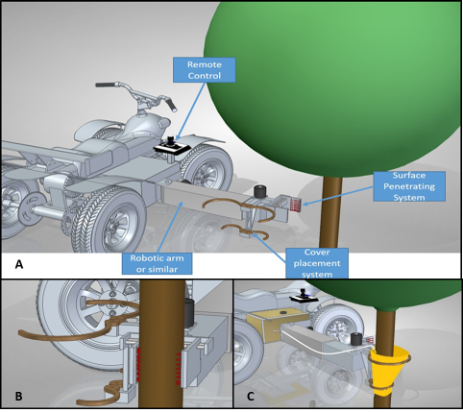
Our approach will focus on development of a new system of delivery that efficiently and homogenously delivers any type of liquid material with the potential to suppress or cure HLB or other diseases into the vascular transport system of citrus trees. Specifically, we will introduce the materials through numerous small punctures created by multiple small needles surrounding the tree trunk in a procedure called Needle-Assisted Trunk Infusion (NATI). Numerous openings in multiple locations around the trunk will ensure the even distribution of materials within the vasculature, contrary to single-needle injection. Injury and/or harm to the tree, particularly the destruction of vessel elements at the application site, will be minimized by the smaller size of the needles and the exclusion of high pressure for delivery of material. Rapid delivery will be ensured by using many needles to create numerous openings through which the material will enter the vasculature. The therapeutic will be held in a reservoir surrounding the application site and allow uptake of the material according to the trees natural transport capacity. Automation of the system will facilitate application and greatly reduce any labor-associated costs. We will also conduct detailed investigations on the anatomy and physiology of citrus trees with emphasis on xylem vessel arrangement, daily and seasonal patterns of water conductance, and movement of materials to and within the phloem.
Most common methods used for applying agrochemicals in diverse agriculture systems are foliar spray and soil drenches that are relatively easy and cost-effective. However, in some instances these techniques may not be effective in delivering therapeutics to the desired part of the plant due to time of application and/or formulation of the agrochemical. Another mode of delivery of liquid material is through trunk injection. Trunk injection is typically conducted via large-sized single injection needles in combination with substantial pressure. This methodology is often used to treat vascular bacterial, fungal, or nematode diseases of forest trees and different tree crops such as avocado, grapevine, cocoa, or palms (Brooks et al., 1994; Takai et al., 2000; Koch et al., 2010). Many citrus studies that investigated efficacy of different antimicrobial compounds as well as insecticides by trunk injection show positive results (Shwarz et al., 1972; Boina and Bloomquist, 2015; Hu et al., 2016 and 2017). However, trunk injection is laborious and can damage the tree. Despite these pitfalls, due to the seriousness of HLB in Florida and increasing despair within the grower community, trunk injection of bactericides and other therapeutic materials is gaining much interest.
Unlike most vascular diseases associated with the decline of forest trees and other plants, the bacterium associated with HLB (CLas) is primarily located within the phloem of a citrus tree. Contrary to general belief, trunk injection does not deliver materials directly to the phloem. Trunk injection can only occur into the xylem, i.e. the water conducting elements of plants; direct injection into the phloem is not possible. In order to reach the phloem, any injected material will first have to move along the path determined by the network of xylem vessels before reaching other locations in the plant (uptake). Movement of material from xylem to phloem may also occur along this path, as was shown by Gessler et al. (2003) and Killiny et al. The complexity of the processes involved in the gross term "uptake" should not be underestimated. There are several steps between the absorption of molecules from a solution and their final secretion into the sieve tubes (Crafts, 1956). Several studies on varying plants show that some of these steps require metabolic energy (see Evert, 2006 and references within). The last step, secretion into the sieve tubes, occurs against a concentration gradient as demonstrated for sugars and nutrients and is also dependent on the time of year (Crafts, 1956; Zimmerman, 1960; Jensen et al., 2016).
Trunk injection experiments using single needles/syringes demonstrated that injected materials do not spread evenly throughout the trunk vasculature immediately after injection; rather, spreading will follow the path determined by vessel arrangement. In many trees, water transport is confined to the outer most annual ring of the sapwood and no transport occurs in the inner heartwood (Koslowski and Winget, 1963). Similar observations were made for citrus by Vasconcellos and Castle (1994) who demonstrated that water uptake of mature grapefruit trees greatly diminishes from the outer portion to the inner portion of the trunk. In addition, injected materials generally remain near the site of injection and distribution will only occur along their ascent from injection site to the canopy, following either a spiral or a sectorial pattern (Koslowski and Winget, 1963; Sano et al., 2005; Pallardy, 2007). Preliminary injection experiments on grafted citrus trees conducted in our laboratory confirmed these findings. It is therefore anticipated that delivery of HLB-therapeutic materials through single-needle injection will not result in sufficient and homogeneous distribution, therefore greatly reducing their efficacy.
In ongoing experiments, we are using simple dyes to track the success of delivery to citrus trees and monitor transport and spread using different delivery methods. Our novel method delivers liquid materials through numerous small punctures opened by tiny needles covering an area of the trunk that is considerable larger than single injection sites from a reservoir (i.e., a funnel or latex balloon mounted on the trunk) covering the application site.
In initial experiments, 1 ml of rhodamine (1%) was applied onto trunks of grafted and non-grafted young citrus plants grown in the greenhouse using NATI. In one-year-old seed-grown citrus seedlings treated with NATI, a visible red color, indicative of rhodamine uptake and movement, was detected in the upper-most leaves as early as 30-60 min after application and increase in color intensity was observed 24 hours post-application. Similar results were observed on two-year-old grafted Valencia plants in the greenhouse that received rhodamine by NATI 48 hour-post-application.
Additionally, trunks of Valencia plants of similar size and age received rhodamine by NATI either through one or two application sites to facilitate delivery and distribution of more dye in plants. There was noticeable difference in intensity of red coloration between the leaves on plants receiving NATI through one or through two sites on the trunk, the latter being more intense. These differences were more noticeable when plant tissues including leaf petioles and roots from these plants were dissected and observed under a digital microscope. The occurrence of dye in the roots hours after trunk application clearly demonstrates that materials, after being moved upwards through the xylem, can move into the phloem and come in contact with CLas. Finally, plants treated with NATI have not shown any stress signs during first two weeks after treatments in which openings on the trunk were completely healed, and the phytotoxicity that was seen on plants having been subjected to trunk injection was not observed.
Together, our results indicate that NATI is a viable method and can be used for delivering liquid materials into the citrus vasculature without any detrimental effect to plants. Citrus plants of different size, age, and cultivar – both grafted or non-grafted – can be treated with NATI as rhodamine dye used in our experiments was shown to cross the graft union and reach the top most leaves as well as roots of the plants. Furthermore, we were able to quantify this dye (and oxytetracycline) by using a fluorescent plate reader with a reliable standard curve. This will allow us to compare efficiency of NATI technique as well as performance of the automated delivery system (ADS). The ability to track and quantify dyes and other materials will allow us to optimize concentration of liquid materials to be applied by ADS for most effective delivery.
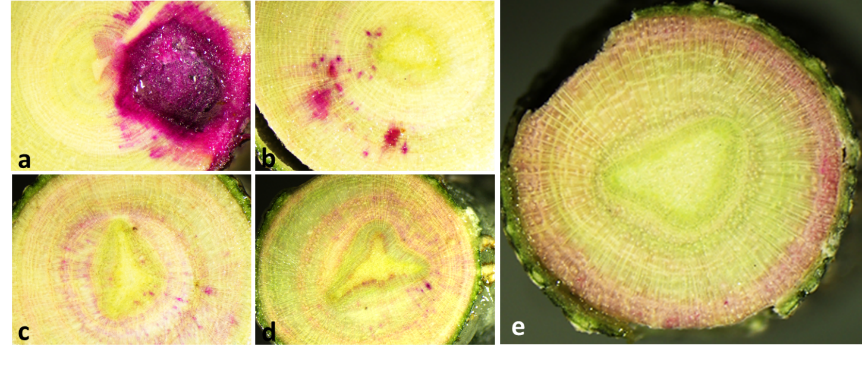
Credit to Dr. Ute Albrecht
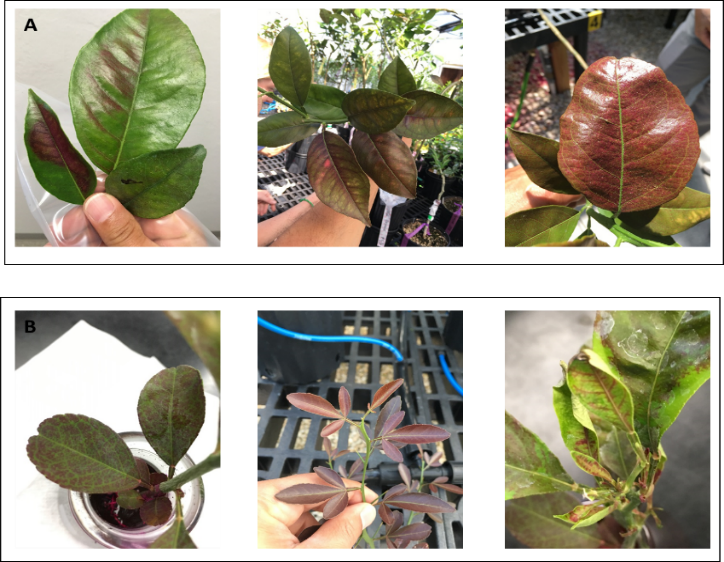
Credit to Dr. Ozgur Batuman
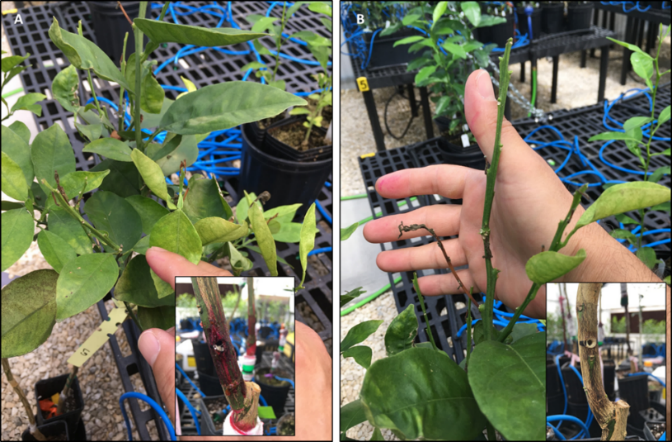
Credit to Dr. Ozgur Batuman
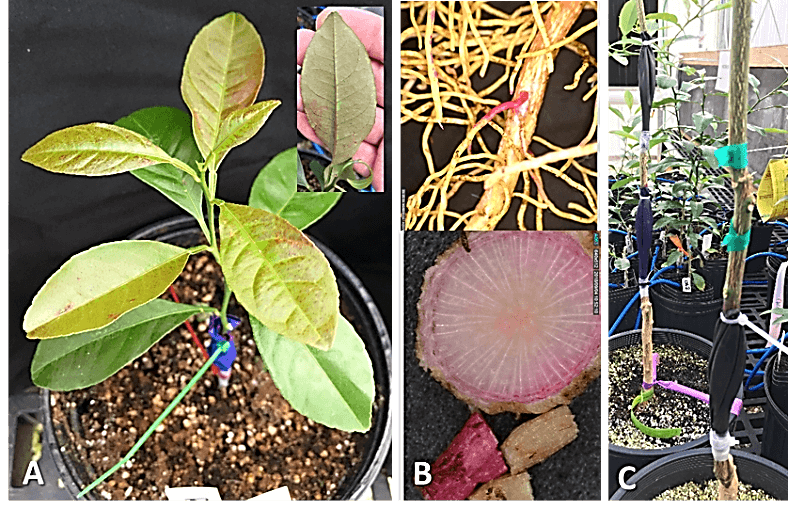
Credit to Dr. Ozgur Batuman
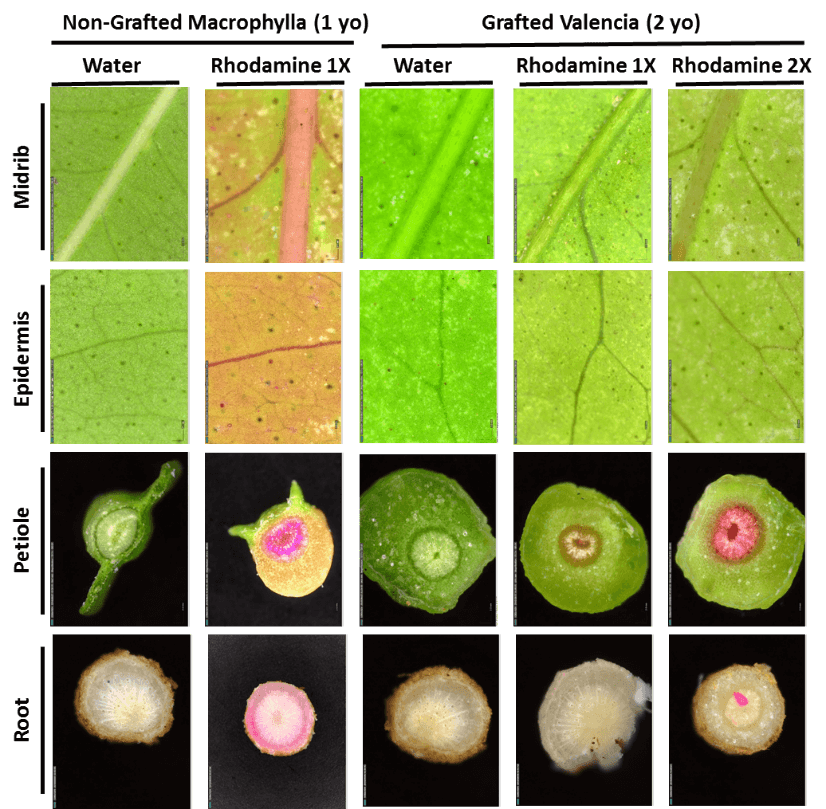
Credit to Dr. Ozgur Batuman
Credit to Leon Morais
NATI helps therapeutics enter the vessels of the tree to defeat problems in the xylem and phloem. Foliar sprays and soil drenches have more difficulty entering the vessels and finding their targets there.
Liquid antibiotics, nutrients and metabolites can be used with NATI to treat trees.
NATI is a less invasive method than traditional trunk injections but offers a more direct route to the plant vasculature than foliar sprays and soil drenches to treat tree problems. An automated NATI system will be able to cut down on time and labor costs when treating many trees in a grove.
Yes, NATI will be able to be used with many types of trees when a treatment meant for the vasculature is needed.
Florida Citrus FAQ - https://www.floridacitrus.org/grower/fdoc-citrus-411/faqs-citrus-greening/
Frequently Asked Questions About Huanglongbing (HLB; citrus greening) for Homeowners https://edis.ifas.ufl.edu/pdffiles/PP/PP32600.pdf
Citrus Greening Factsheet http://edis.ifas.ufl.edu/pdffiles/PP/PP26300.pdf
UF/IFAS Citrus Greening FAQ – Gardening Solutions http://gardeningsolutions.ifas.ufl.edu/care/pests-and-diseases/diseases/citrus-greening-faq.html